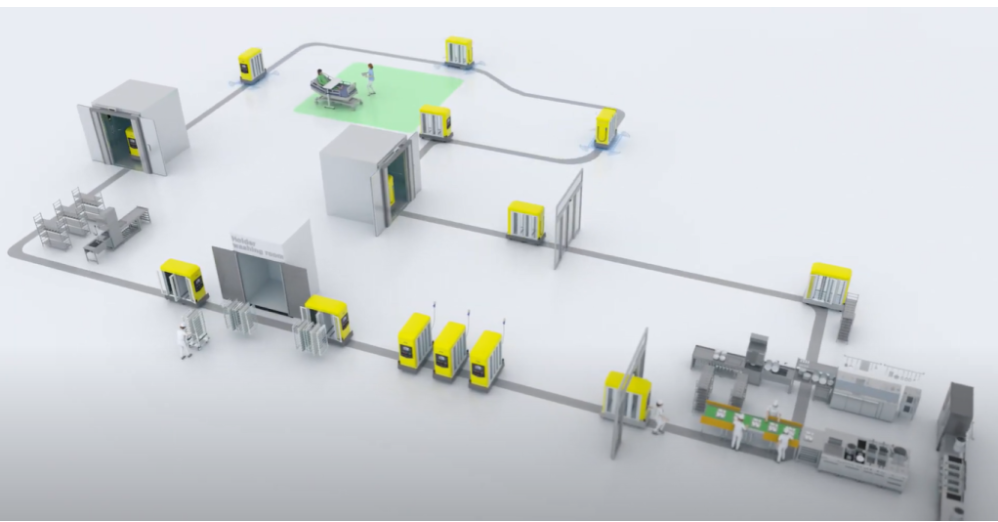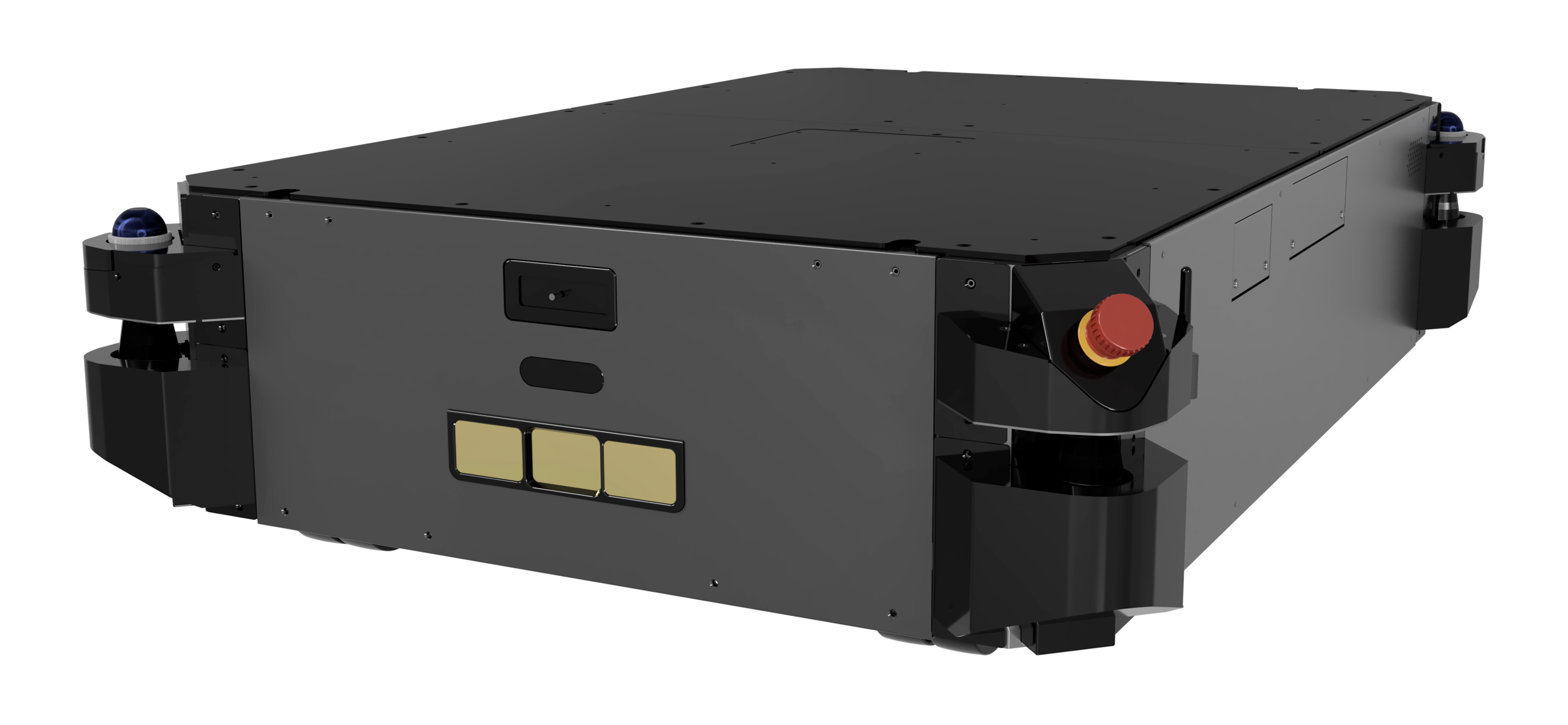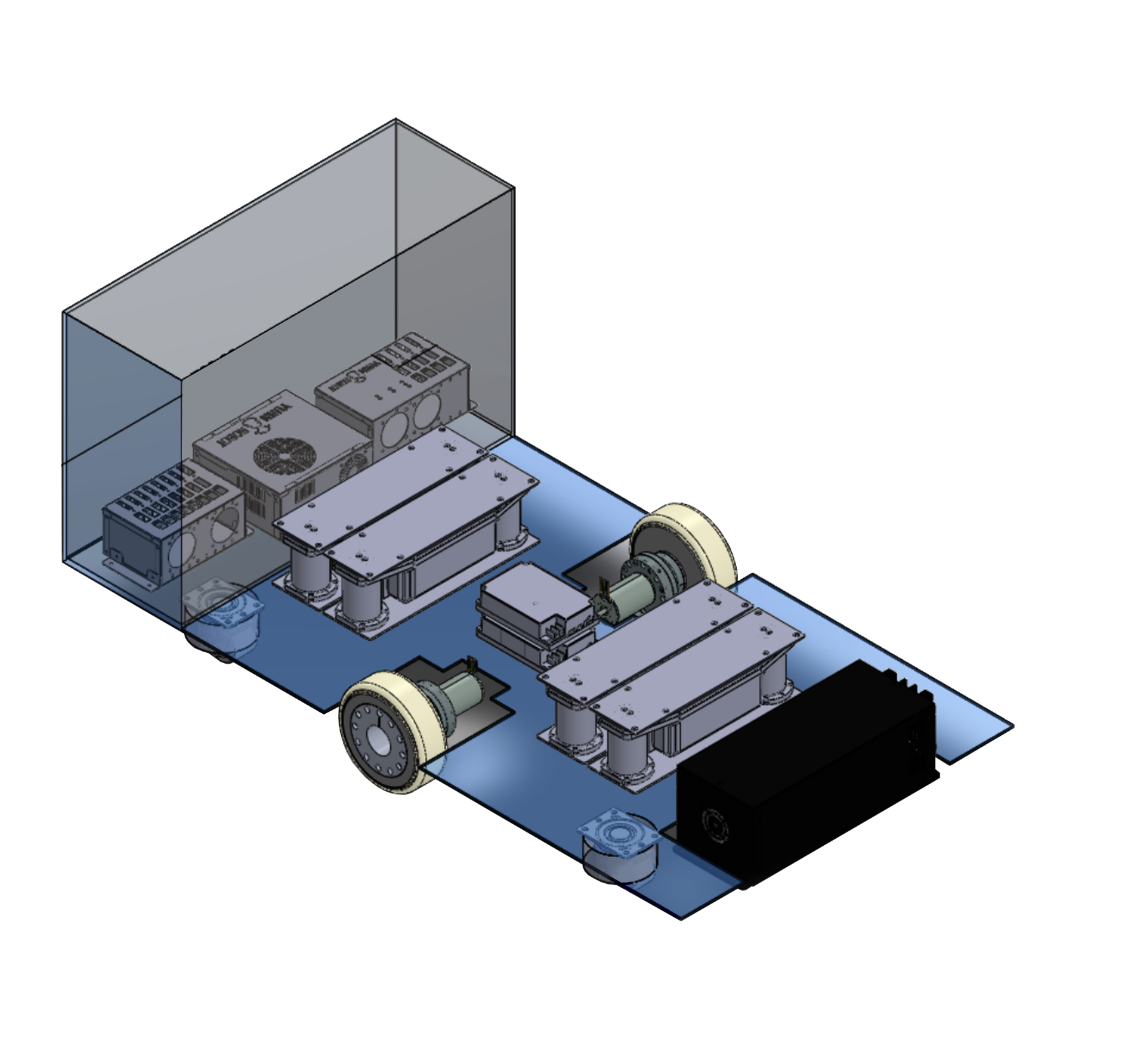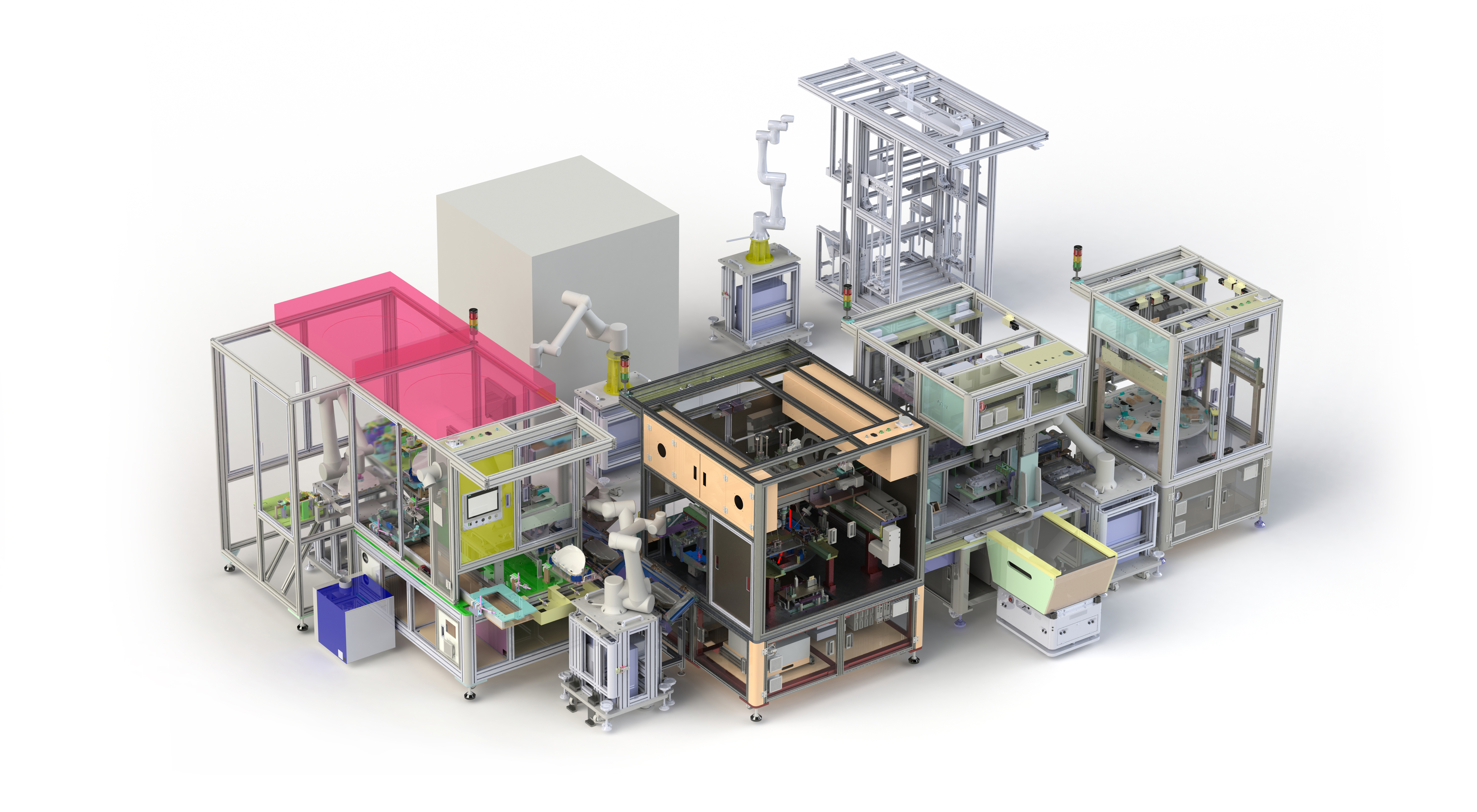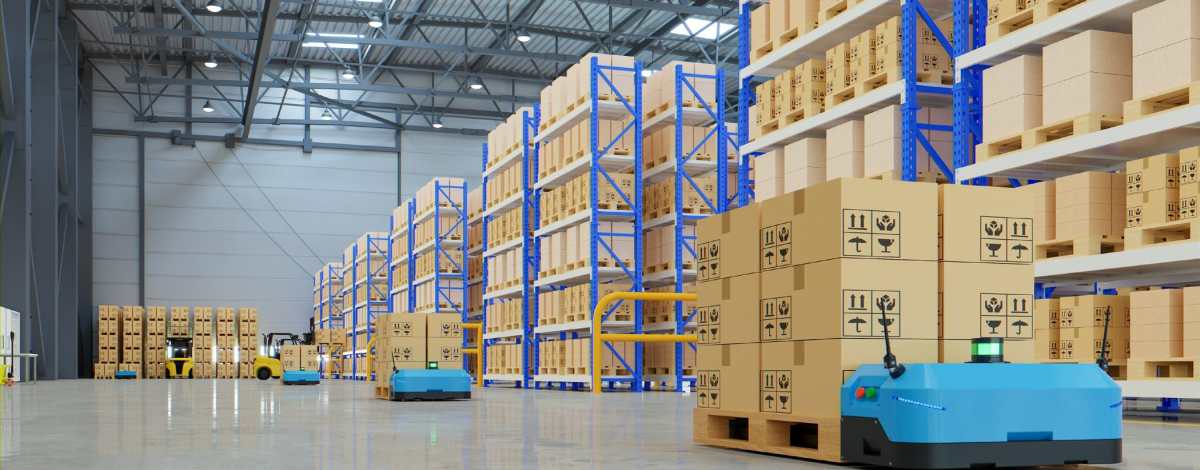Autonomous Mobile Robots (AMRs) are a cost-effective, safe and agile alternative for lifting and transporting pallets in warehouses and manufacturing centers. Although AMRs have multiple uses, companies are prioritizing purchases of robots with pallet-lifting capabilities, as demonstrated by industry surveys. By enabling businesses to reduce reliance on forklifts, pallet-lifting robots offer important safety benefits. They improve efficiency on the warehouse or factory floor, helping teams respond to labor shortages. As businesses respond to high levels of consumer demand and navigate supply chain shortages, pallet-lifting AMRs support productivity and throughput.
Pallet-lifting AMRs top buyers’ wish lists
A recent survey by Modern Materials Handling/Peerless Media shows that pallet-lifting AMRs are top-of-mind for buyers and crucial to their business goals. Prospective buyers, systems integrators and others in the industry describe autonomous mobile robots for pallet-lifting as the top solution they are considering.
When asked why they are pursuing robotics, respondents listed their top three reasons as:
- Increase flow/throughput
- Help address labor availability constraints
- Improve labor productivity
How warehouse AMRs became essential for industry
AMRs are a technology whose time has arrived, given current labor shortages and pressures on the warehouse/manufacturing sectors to become even more efficient. The first commercial AMR became available in the early 1990s for use in hospital settings. AMRs have evolved significantly during the past 30 years as AI (artificial intelligence) and machine learning evolved.
Factories and warehouses first began to adopt Automated Guided Vehicles, (AGVs), which can follow fixed routes on a factory floor and stop when confronted by a person or object. Many organizations are now investing in AMRs to replace AGVs. AMRs can self-navigate, transporting goods throughout large warehouses and factories, steering around people and obstacles, and avoiding collisions. AMRs are also more cost-effective than AGVs, as they don’t require the investment in magnet lines and other equipment required for AGV operations.
AMRs gained industry-wide awareness and traction when Amazon purchased AMR manufacturer Kiva Robotics in 2012 and deployed robotics throughout its worldwide fulfillment centers, while essentially removing Kiva from the broader commercial market. Using AMRs to assist human workers contributed to Amazon’s growth and its ability to deliver extremely rapid turnaround times for shipments and inventory management. AMRs are becoming more widely used across the warehouse and manufacturing sectors.
Companies are eager to reduce use of forklifts
Pallets and forklifts represent an approach to moving goods that’s about a century old. Pallets and forklifts were essentially invented together and introduced in the 1920s. Although businesses continue to use forklifts in targeted ways, many companies are reducing use of forklifts, because of concerns about worker safety. Approximately every three days, a U.S. worker is killed in a forklift-related accident, according to the Occupational Safety and Health Administration. Forklift overturns and pedestrian collisions are common causes of fatalities and injuries. Because of safety concerns, many companies are limiting forklift use.
How companies use pallet-lifting AMRs
Companies use pallet-lifting robots to reduce the use of human-driven pallet jacks and other forklifts, while improving efficiency within a distribution center or factory. Employees use a forklift to unload pallets from vertical shelving or trucks. Pallet-lifting robots can then accept the pallets, with most able to transport a load of 500 kilograms or 1,000 pounds or more. This strategy keeps forklifts away from higher traffic areas of the warehouse or factory floor.
Pallet-lifting AMRs use LiDAR-based SLAM technology and deliver pallets to specific destinations within the warehouse or factory. They can self-navigate between any two points, adjusting their route as needed to avoid people or obstacles.
Companies deploy pallet-lifting AMRs to transport product for putaway. Other common uses include delivering pallets from a receiving to a staging area, from staging to shipping, or from the warehouse to the factory floor. Warehouse and factory teams also use AMRs to move stacks of empty pallets back to reloading areas.
Why warehouse AMRs are a safer alternative
With a compact shape, low center of gravity, and rounded corners, pallet-lifting robots are a safer alternative to forklifts of all kinds. Their design prevents tip-over, and their careful navigation and collision avoidance protects employees from accidents and injuries.
While improving safety is the highest priority for employers, preventing spills and collisions also reduces the risk of damage to palletized goods. Warehouse or distribution center damage costs $15 billion a year in unsaleable goods, according to the Council of Supply Chain Management Professionals. Given supply chain challenges and shortages, protecting goods from damage is more important than ever.
Pallet-lifting robots help humans work efficiently
Because of their agility, pallet-lifting robots can enter areas of the factory or warehouse that are forklift exclusion zones, bringing goods more directly to workers and equipment. They can also transport loads more precisely, delivering them exactly when and where they’re needed. This is an advantage compared with solutions such as tug trains, which may be loaded with many pallets, slowing delivery of supplies or merchandise within the facility.
Tug trains require a driver and are awkward to navigate through narrow corridors or around tight corners. Because of load size and design, tug trains are slow-moving, so workers wait longer for goods to arrive.
AMRs support agile and smart workplaces
With more agile distribution of pallets from the warehouse to other destinations in the distribution center or factory, companies can improve throughput. With increased consumer demands for timely deliveries, throughput is a top priority for companies.
AMRs also connect wirelessly with manufacturing execution systems (MES), which are systems that track production data in real-time and serve as nerve centers for factories. AMRs can receive and carry out real-time instructions from the fleet management system (FMS), which is linked with the MES, which is designed to anticipate shortages and needs within the factory or warehouse before they occur.
Responding to the labor shortage
The pandemic accelerated the retirement of the baby-boom generation, leading to long-predicted labor shortages. Labor turnover rates are as high as 36% for warehouse workers, according to the U.S. Bureau of Labor Statistics. Use of AMRs reduces the need for human-driven forklifts and tug trains. Introducing AMRs saves time for workers, since goods can be delivered in a timely, precise manner throughout the facility.
Why customers are choosing YUJIN ROBOT
Warehouse and manufacturing customers are choosing Yujin Robot GoCart 500 for pallet-lifting and transport, replacing use of pallet jacks, tug trucks and injury-prone human involvement with moving pallets. Companies use GoCart 500 to support the front-end and back-end of warehouse operations, from receiving to preparation of product for shipment.
GoCart 500 can lift loads up to 500 kg (1,102.31 lbs.), and is highly adaptable with a small footprint. Yujin Robot’s proprietary Fleet Management System (FMS) integrates with elevators and doors, making the GoCart 500 an ideal solution for multi floor facilities. The FMS also enables customers to monitor and manage multiple robots and oversee their tasks.
GoCart 500 adheres to the industry’s highest safety standards and is built for optimal path planning and obstacle avoidance, without any artificial markers required. GoCart 500’s compact size and navigation skills enable it to safely travel through narrow corridors and busy environments.
GoCart 500 features Yujin Robot proprietary 3D SLAM (simultaneous location and mapping) and navigation based on Yujin proprietary 3D Lidar (light detection and ranging). Lidar uses eye-safe laser beams to enable the robot to perceive the factory environment in 3D and safely navigate. A 2021 third-party evaluation by Deloitte praised Yujin’s SLAM, navigation technology and safety controller as “best in class” and “cost-competitive.”
With GoCart 500, companies are creating a warehouse and factory environment that’s safer, more efficient and more agile. Learn more about how introducing AMRs can improve your processes and performance.




